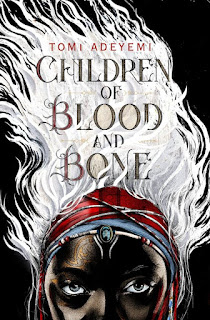
How can YouTube be used in the Library?
Students can learn a
great deal just by watching technology in the
classroom videos and learning
from the thoughts, experiences, and demonstrations of others. In fact, they
already are. Students are naturally watching videos that are interesting and
relevant.
· Flipped
Instruction. - this allows the students to become the teacher or making the
classroom content available anywhere. With YouTube you can assign students to watch
a video before coming to the library. Students can use as a resource to learn
class content. Do you want to give students a resource they could use to learn
outside of the class? Find (or create your own) videos on YouTube that address
the material you need and give the links to your students.
· Supplemental
Information. – a librarian can give students extra information that you
don’t have class time to commit to. Share the interesting links with students.
Students could benefit from some additional video resources to help them when
they’re working outside of class.
· Self-Directed
Learning- a librarian can take curriculum content and direct students to
YouTube as a resource to find the information interesting and relevant to them.
You can assign students a self-directed project or have an or have an
individual passion they want to explore, encourage them to take advantage of
YouTube.
· Classroom
Enhancers. Videos can illustrate ideas and engage students far more
substantially than textbooks, lectures, pictures, or other activities. When
possible, turn to this free resource for building more effective lessons during
class time.
Examples of Librarians videos on
YouTube
YouTube
Below are YouTube videos that librarians have posted
that would be most helpful for students.
Librarian Calypso Gilstrap made a video to show
students how to use online database EBSCOHOST
This librarian shows students how to Soundzaband a resource
that allows students to access royalty free music.
The librarian of Pikesville High School Library posts several videos of teachers discussing AP courses. Students who are considering taking these courses can view videos to seek more information about the courses.
Below are examples of videos that students would like
best.
This is a video of a student project. It is a great
creative example of how to allow students to own their learning of curriculum
content.
This video highlights the Pikesville High School
students in their school library. It shows students engaged in the activities
of the school library.
This is a student created video about overdue library books.
It’s a great assignment to review the policy and procedures videos. The librarian
can show this at the beginning of the school year.
Animoto
Animoto is a Web 2.0 tool that
allows users to produce videos that blend photos, video clips, text and
music. Examine your existing curriculum to decide where the use of
Animoto will support your learning objectives. For example, Animoto could be
used for the following ideas:
·
At the start of the school year, students
could use Animoto to introduce themselves or their classmates.
·
Students can illustrate their own poetry
using digital images they find on Internet or ones they take.
·
Animoto can be used to present research
information to the class.
·
Students could illustrate step-by-step
instructions for procedure writing.
·
Send students on a scavenger hunt,
supplied with digital cameras. Have students assemble their digital
images into an Animoto video to display what they found.
·
Students can use Animoto to create a book
trailer.
What
is a QR Code?
A QR Code is very similar to a bar
code. QR stands for Quick Response. The image consists of square
dots in a unique configuration that provides information for the user.
QR Codes can contain text, links (to
web sites, videos, files), and much more. QR Codes are safe to use in the
classroom, so there’s no worry about leading your students astray.
Students only access what you tell them to via the QR Code.
Why should a librarian
use QR Codes in the library?
The main reason is
that it’s easy to give students web addresses and allows them to be more
independent. It allows the librarian to automate and release responsibility to
the students. QR Codes reduce frustration
of typing in a web address. QR codes are
fun for students to use!
Ways I can use QR
codes in the library?
There are many ways
to incorporate QR codes in the library. They are fun, easy to use and
create! Below are a few examples:
A Scavenger Hunt
Create a scavenger
hunt of the different genre sections of the library. Get the
students up and moving by creating a scavenger hunt. Place questions around the
room, or better yet, around the school. Add possible answers to the questions
and accompany each answer choice with a QR code that sends
students to a new location. Only the correct answer will send them to a new
question. Incorrect answers offer a hint and send them back to the question
they missed.
Simplify
Research Projects
Provide quick and easy links to articles, videos, web sites, or
podcasts that you want your students to be able to access.
Provide
Support to Struggling Readers
Make audio recordings of material you need students to read and
upload the recordings to your Google Drive or Dropbox. Link
a QR code to the web address for the file and have
the QR codes available for students who need a little extra help
when reading content area material.
New
Take on Book Reports
Make video or audio recordings of students reviewing a library
book. Link the recording to a QR code and attach it to the spine of the book.
Students will be eager to check out what their friends think about books in the
library.

Below
is an example of a book trailer I created using Animoto for the fiction young
adult book Children of Blood and Bone by author Tomi Adeyemi. It is a #1 NY Times Bestseller, has receied numerous awards! It was my favorite book of 2018!
Zélie Adebola remembers when the soil of Orïsha hummed with
magic. Burners ignited flames, Tiders beckoned waves, and Zélie’s Reaper mother
summoned forth souls.
But everything changed the night magic disappeared. Under the orders of a ruthless king, maji were killed, leaving Zélie without a mother and her people without hope.
Now Zélie has one chance to bring back magic and strike against the monarchy. With the help of a rogue princess, Zélie must outwit and outrun the crown prince, who is hell-bent on eradicating magic for good.
Danger lurks in Orïsha, where snow leoponaires prowl and vengeful spirits wait in the waters. Yet the greatest danger may be Zélie herself as she struggles to control her powers and her growing feelings for an enemy.
But everything changed the night magic disappeared. Under the orders of a ruthless king, maji were killed, leaving Zélie without a mother and her people without hope.
Now Zélie has one chance to bring back magic and strike against the monarchy. With the help of a rogue princess, Zélie must outwit and outrun the crown prince, who is hell-bent on eradicating magic for good.
Danger lurks in Orïsha, where snow leoponaires prowl and vengeful spirits wait in the waters. Yet the greatest danger may be Zélie herself as she struggles to control her powers and her growing feelings for an enemy.
I created a QR code
to view the book trailer below


Thanks for sharing your ideas on how to use these tools in the library! Great information! I also enjoyed your book trailor. The images were amazing and colorful! Can't wait to read that book.
ReplyDeleteGreat book choice, cool trailer.
ReplyDeleteI really liked your list of how to use YouTube in the library. Love the ideas! Oh my goodness, your book trailer worked!!!! I had never heard of Children of Blood and Bone, and now I really want to read it. Definitely going to be on my reading list this year!! Thank you!
ReplyDeleteI really enjoyed your suggestions as to how QR codes can be used for educational purposes. I really enjoyed your book trailer, can't wait to get the book and read it! Awesome post!
ReplyDeleteGreat suggestions on using QR readers in the library. I created an assignment for another LSSL course where the students used QR readers to complete a scavenger hunt for famous African Americans. It tied in research skills and understanding why biographies are written about certain people (what was significant).
ReplyDeleteAwesome job!